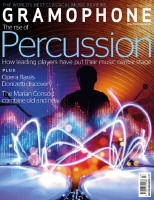Texte paru dans: / Appeared in: |
|
|
Outil de traduction (Très approximatif) |
|
|
Reviewer: Patrick Rucker
Proverbially,
the clavichord is held to be the most expressive of all keyboard instruments
because the player’s contact with the sound source is least mitigated. No
tracker, no retracting jack, no singlestriking hammer, only the player’s finger
on a lever at the opposite end of which a metal tangent makes contact with the
string. The clavichord’s quiet sound also makes it the most intimate of
keyboards. Expressivity and intimacy are the hallmarks of this new recording of
Bach’s Six Partitas by Menno van Delft, professor of harpsichord and clavichord
at the Amsterdam Conservatory. He plays a 1784 clavichord by the Thuringian
maker Christian Gotthelf Hoffmann, now owned by the Cobbe Collection Trust and
which resides at Hatchlands Park, near Guildford in Surrey.
As special as it
may be, this recording is not about the instrument but about Bach and the light
that can be shed by his favourite keyboard on some of his best-known music. From
the first measures of the B flat Partita’s Prelude, an unexpected lyricism, a
beautifully maintained singing line takes centre stage. I think it’s fair to say
that, generally speaking, the speed possible on the harpsichord or piano is
unachievable with the clavichord’s simpler mechanism. This means that some of
the quicker dances may be slower than we’ve become accustomed to. To van Delft’s
great credit, the marginally slower tempo of a Courante or Gigue robs it of none
of its character and spirit. We adjust our ears and are delighted by the aptly
vivid expression, despite its smaller gestures. But what of some of the grander, more extrovert movements of the Partitas, the haughty C minor Sinfonia, the cunning A minor Burlesca and Scherzo, the jaunty G major Passepied and Gigue or, indeed, the magnificent D major French Ouverture? Don’t they sacrifice some of their essence in this quieter dynamic and more leisurely pace? Not a bit. The organist, the harpsichordist and the pianist (of whatever vintage instrument) each have their unique, non-transferable articulation strategies. So too the clavichord player. Listening to van Delft’s masterful, always stylish interpretations is an education about what the hand can do, given different tools, in the service of the imagination. And because van Delft is a consummate musician, his Bach is immensely entertaining. |
|




